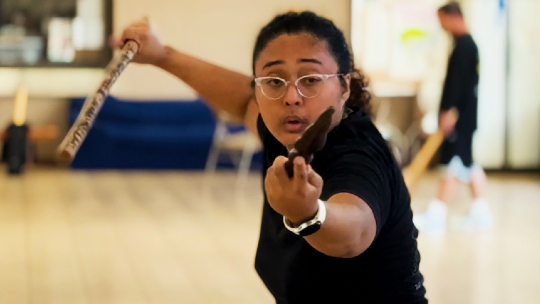Dina Knight developed her at-home yoga practice after a serious car accident. Her injuries were minimal, but she walked away with intense anxiety and lingering pain. She started stretching in her living room to find relief.
“The only time I felt like I had any control of my anxiety was when I would lose myself in these really long holds,” she says. “I would tell myself, ‘For one hour, I'm just going to stretch,’ and through breathing and allowing myself to focus on nothing but the present, it gave me so much mental comfort.”
Now, Knight teaches others how to build their own home practice as a healing tool that they can access whenever they need it. “The goal of yoga is ultimately for you to take what works for you and leave what doesn't and meet yourself where you're at,” she says. “And hopefully, you'll take some of these postures that you love or feel amazing in your body and the next time you feel like you need them, you'll use them.”
Knight says a few deep breaths are enough to calm the nervous system. Start your practice with a couple minutes of inhaling and exhaling for an equal count. Then, take a moment to reflect on what you need. Your yoga practice should supplement something you’re not getting in your daily life.
Ready to move? Knight recommends starting with the following poses.
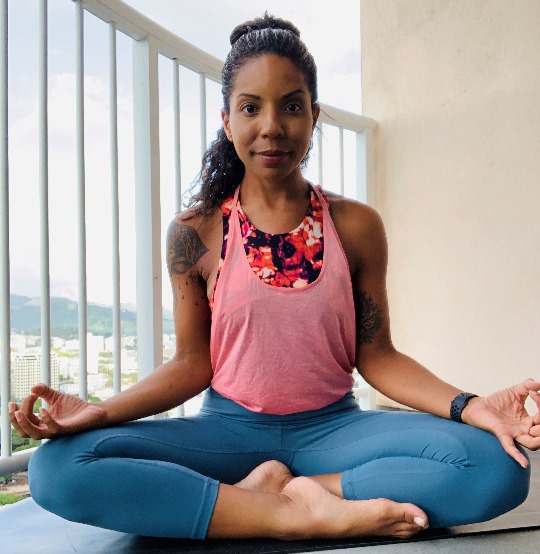
Easy Pose
- Sit for a minute in this shape, noticing how your body feels and where tension and discomfort first present themselves.
- Options: Modify legs by letting them fall farther from the hips or sitting cross-legged. Use props like a towel, cushion, or block to lift hips.
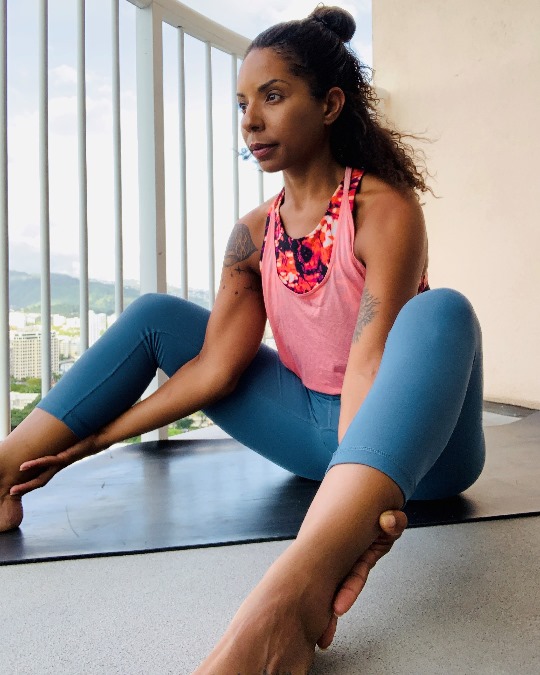
Tortoise Pose Prep
- Gently open knees outward, inviting external rotation in the thighs, as you draw the chest forward between your bent legs.
- Option: Lift hips with a towel, cushion, or block.
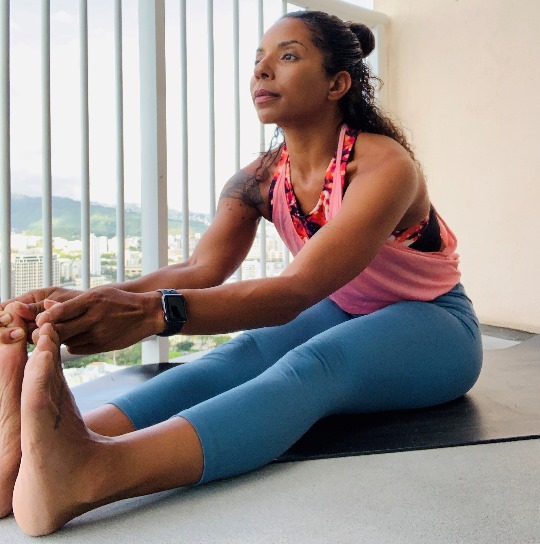
Staff Pose
- Focus on drawing the belly to upper thighs and lifting the chest as you fold forward.
- Options: Keep a gentle bend in the knees and lift hips with a towel or cushion.
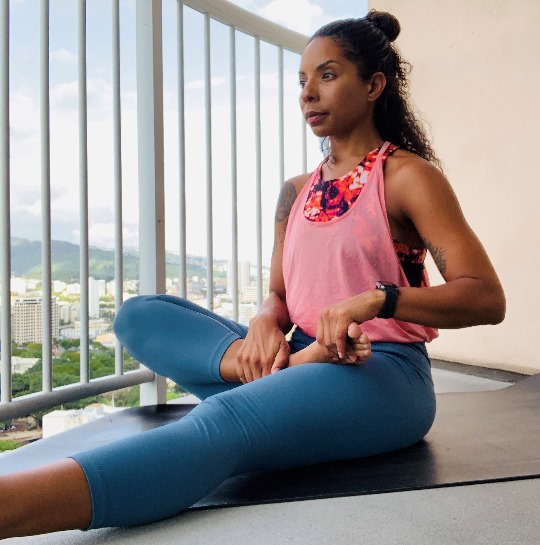
Staff Pose Variation
- Externally rotate one thigh, bend the leg, and draw the heel to rest on top of the opposite thigh.
- Gently fold forward leading with the chest for deeper hip opening.
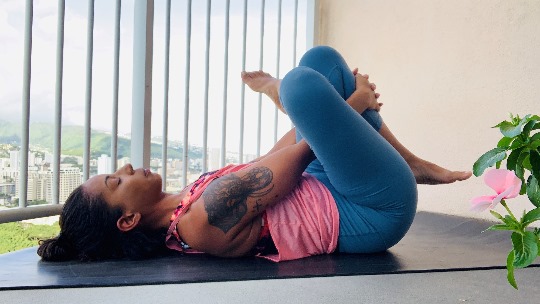
Reclining Figure 4 Pose
- Draw the shoulder blades under the body. Bend one knee, pressing the sole of that foot into the mat. Cross the opposite ankle over your knee.
- Take hold of the back of the leg or shin, whichever allows you to keep your head and shoulders resting comfortably on the mat.
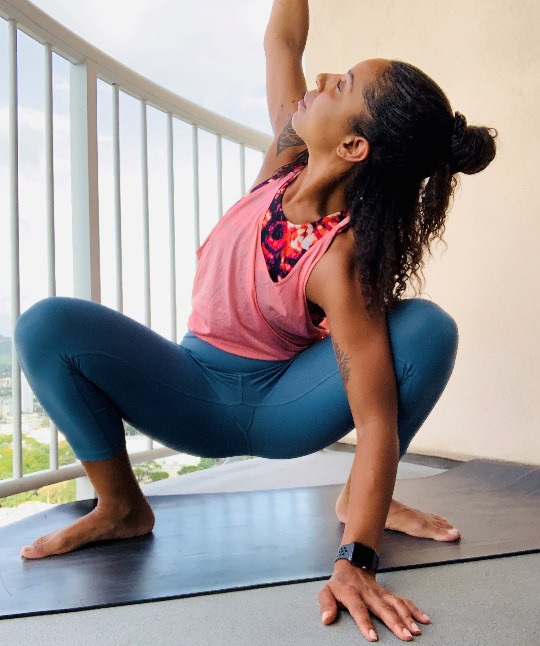
Garland Pose
- Stand with feet apart slightly wider than hips. Turn the toes out 45 degrees and lower the tailbone toward the mat. Bring hands to heart center, pressing the elbows into the inner thighs, inviting the knees open.
- Option: Take a gentle twist in each direction, sending the opposite arm up.
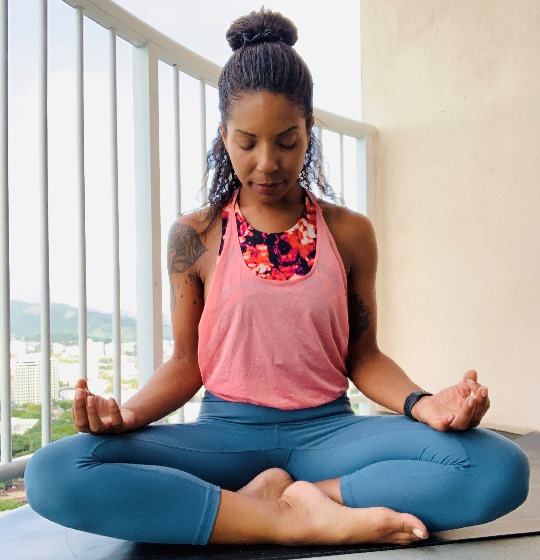
Return to Easy Pose
- Come back to a comfortable seat. Take a minute to notice how this shape feels different now that you've prepared your body for the act of sitting.
- Use your props to make the shape as comfortable and sustainable as possible and aim to sit for 10-15 minutes. Each night, add one minute. If you find yourself getting restless sitting in silence, opt for a guided meditation.
Read about Knight's journey to sobriety and how yoga helped her in recovery in the winter 2020 issue of Island Scene.




